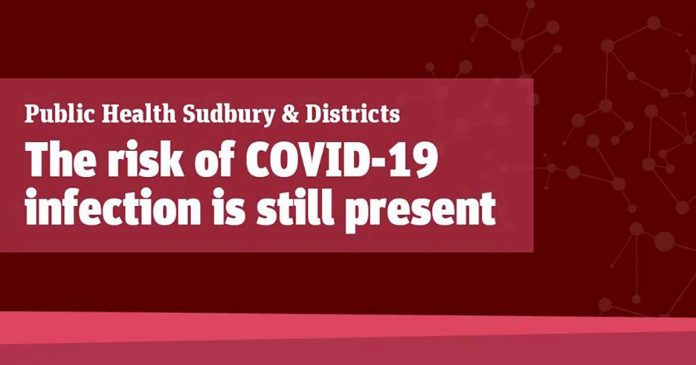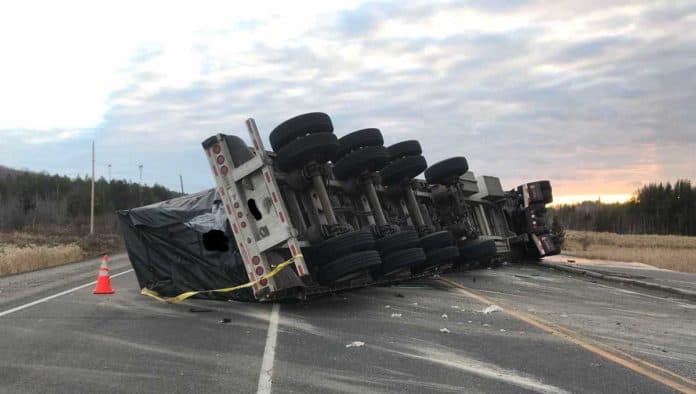MINDEMOYA – The question of how the federal ban on single-use plastics will affect Island communities and ways of adapting to lower waste lifestyles were the themes for a panel discussion co-sponsored by Central Manitoulin and the Township of Billings during Waste Reduction Week. Moderator Chris Theijsmeijer is a teacher at Manitoulin Secondary School who has been involved with Billings and waste reduction for more than a decade. Panelist Paul Darlaston represents the citizens of Billings on the township’s climate action committee. Rochelle Byrne, executive director and co-founder of A Greener Future (AGF) joined the panel to share her work with A Greener Future and how she is working to achieve a zero-waste lifestyle.
“This is something I’m very passionate about,” said Ms. Byrne. “I’ve basically dedicated my life to trying to inspire people to understand the problem of waste and to hopefully come together to come up with solutions. AGF is a non-profit I started in 2014 after doing the litter cleanup but I have learned a lot over the past six years of running AGF.”
The non-profit has collected over 1.5 million pieces of litter since 2014. The majority of waste AGF picks up is plastic. “Everything is plastic,” she said.” It’s food packaging, electronics, things that we use in our daily life. It’s everywhere. Plastic doesn’t last very long. In a lot of cases it’s single use but it lasts a long time in the environment.”
Plastic can persist for hundreds or even thousands of years in the environment, Ms. Byrne said. Much of what is produced is single use and are justifiably on the banned list. Plastic straws, for example: AGF volunteers picked up over 3,000 straws in two months. In Toronto’s Colonel Sam Smith Park, they picked up 201 straws just off that one beach. It’s not always from intentional littering, she noted.
“We don’t know where all of this is coming from but it is causing a big problem. These microplastics are breaking down and are ending up in our drinking water, in our air—and that’s a problem we don’t know how to fix yet. By starting this ban and focusing on things that are easier to remove from our lives, I think it’s a really good start in getting people to understand the problem before we have to tackle the more difficult things.”
Cigarette butt filters, for instance, are a difficult problem. Cigarette butt filters are the number one thing they pick up during litter clean ups. They send them all to a company called TerraCycle, which recycles them. The filters are pelletized and turned into plastic lumber which is then used for building industrial skids or park benches. “It’s nice that something like a cigarette butt can have an alternate use,” said Ms. Byrne. “I think that’s kind of the direction we have to go. There’s a lot of room for innovation and people coming up with new ideas to tackle this problem.”
Consumers are demanding change. It is part of a producer’s responsibility to help that transition by providing their products in a more sustainable way to people or offering alternatives, she said. “A lot of corporations are definitely starting to think that way especially since if they don’t comply with these new regulations there are possibilities they could be fined or have fees to pay.”
In her personal life, Ms. Byrne has been incorporating waste reduction strategies for several years already. These include easy solutions such as bringing reusable bags when she grocery shops. That includes produce bags. Putting fresh produce into plastic bags really only creates more waste, she believes, though she acknowledges that reusable bags were not an option for a while during COVID-19 but they are being allowed again at many grocery stores.
“For me the pandemic has definitely changed things,” she said. “I used to buy all of our dry goods from Bulk Barn in our own jars so we didn’t have a lot of packaging. We would shop at farmers’ markets or go to a local farm. But now we have to be careful about where we’re going when we’re only going to go to one store and we have to follow that store’s rules. We’ve definitely increased our waste since the pandemic but it’s only for an amount of time and then things will go back to normal. I’m not feeling too badly about it.”
Ms. Byrne suggested buying directly from producers, shopping locally and requesting minimal packaging as options. She also recommended buying quality items or second-hand items such as clothing. She has utilized many hand-me-downs for her four-year-old son.
When she goes camping she brings all her snacks in glass jars, which are reused again and again. She brings her own lunch when she goes out so she is not buying takeout. Her family is part of a community-support agriculture group and gets a weekly delivery from a local farm; any packaging that is provided by the farm is returned the following week for reuse. “There are lots of really awesome alternatives out there especially if you’re trying to shop locally,” she said. “You can buy basically a reusable option of every disposable item that’s out there. It just takes some time to find those things and change your habits and get used to it.”
She recommends changing one thing at a time. “If you try to change everything at once it’s going to be difficult and frustrating and you probably won’t be successful with it. For me this has been something that I’ve been tackling for the past six years. I still produce waste but it’s definitely a lot less than when I started. I’m always looking for new ways and innovations that I can change my lifestyle a little bit just to make things easier or a little more sustainable. I think starting small is the most important part. You want to be able to build on that and be confident in your decisions. You don’t want to feel like it’s hard and time-consuming and that it’s not worth it for you.”
She has seen different community or municipal initiatives taking place that include better recycling, better bins in public spaces, different campaigns about littering or where you can recycle textiles or hard to recycle items like electronics and that kind of thing. “Waste is such an expensive part of running a municipality. There are millions of dollars spent on either litter cleanup or recycling cleanup or just garbage collection in general so it’s really in the municipality’s best interest to try to solve these problems and reduce costs and the time it takes to make our communities less wasteful.”
In the west end Toronto community of Ronscesvalles, a woman named Tina started a group called Roncy Reduces. They came up with a little sticker that businesses could put on their window which meant you could bring your own bag or container to refill. “Other communities in Toronto have also started their own groups so now there’s pockets of Toronto where you’ll see this little green sticker in windows and you know that they’ll accept reusable containers,” Ms. Byrne said. When community members speak up and provide opportunities for people to become involved in the community and use their voices collectively it really does make an impact. People begin to understand the problem and want to become part of the solution.
Kim Neale revealed that Central Manitoulin was inspired to begin using a similar sticker system so businesses in the community can go plastic free. While it hasn’t really been promoted, “it is that little step to potentially change people’s behaviour, a positive way to incentivize people’s behaviour,” she said.
Mr. Darlaston asked if Ontario’s proposed blue box regulation conflicted with the federal single-use plastic ban. “They’ve mentioned things like straws but at the end of the day someone actually has to buy those and change those into something else,” explained Ms. Byrne. “The truth is, there’s not a lot of buyers out there that are looking for used straws. They’re hard to recycle and there’s not a lot of things you can turn them into.”
What’s going to happen, she believes, is there will be a lot of items that won’t be allowed to go into the blue box. It will come down to the value of what those items are that are going into the blue box. For example, it’s cheaper to produce new Styrofoam then it is to buy recycled so it is likely that in the future that item won’t be accepted into the blue box. “I think right now the provincial government is trying to cover all their bases and not leave holes in the plan but obviously if things are banned they’re not going to be accepted into the blue bin.”
While the list of banned items is short right now, she believes the federal government will add to that list in the future.
Central Manitoulin Councillor Dale Scott expressed his concerns about the proposed blue box program. “I see Styrofoam packaging and film packaging that goes onto the fruit that we buy at the grocery store,” he said. “Neither one of those will be picked up at our curbside and I’m wondering if we can get that out of our landfill. I’m a little pessimistic about these ever getting out of our landfill.”
Ms. Byrne agreed. “We’ve dug ourselves a bit of a hole with the way we package things. What’s done is done but it’s an opportunity for us to move forward. Buying things that don’t come wrapped in a lot of plastic is the first step on an individual level but I think producers are also starting to wise up and understand that their customers don’t want that, that it can’t be recycled very well. Going forward I hope we see a lot more on the market that is easily recycled or biodegradable. There’s just so many innovations out there and there’s no reason other than cost. That’s probably the biggest factor in packaging. As we come up with new ideas that cost will go down and will be accessible to smaller businesses. If the larger corporations take this approach then it creates a pathway making it easier for smaller businesses to take it on too.”
Mindemoya’s Maja Mielonen shared her deliberate choice to not use single-use food and beverage wares at her business this summer. Even with the pandemic’s take-out only restrictions, Ms. Mielonen chose reusable instead. “We had a wonderful summer,” she said. “People were so conditioned to one-time use only and were so happy when they could go to the garden and drink their coffee out of a real cup. When it comes to garbage, even though I have a little business I have only the tiniest of garbage cans.”
Anyone can make changes by just looking at what’s going into your garbage can, picking something and then trying to find an alternative, Ms. Byrne said. “I’ve tried everything. Some things have stuck and others haven’t. I’m not that good at making my own almond milk so I’d rather buy it. That’s all you can do is try new things and see what works for you. Making your life as easy as possible but also being at a comfort level with how sustainably you’re living.”
“It’s an ongoing process,” she added. “I keep learning and I’m going to continue learning. Especially as I meet new people that have new ideas that I can collaborate with and learn from them. There’s lots of really inspiring stories out there and amazing alternatives. It’s a journey.”






